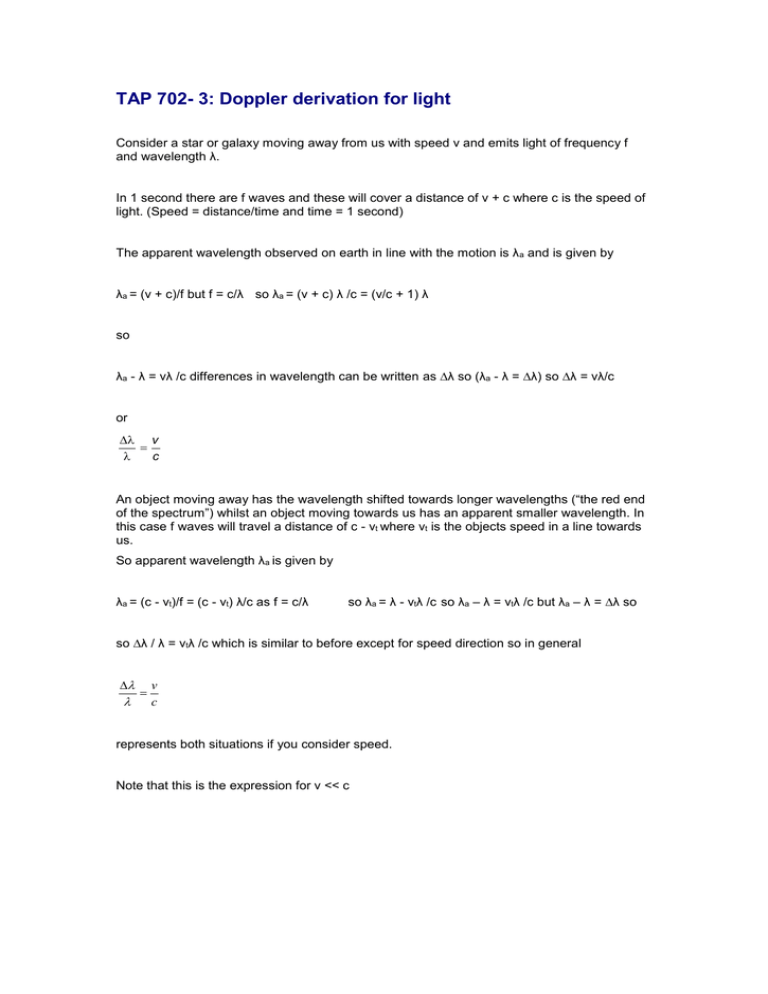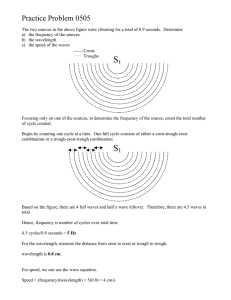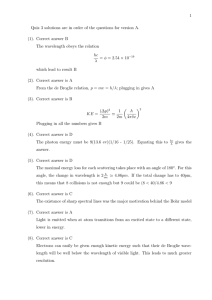Episode 702-3: Doppler derivation for light (Word, 23 KB)
advertisement

TAP 702- 3: Doppler derivation for light Consider a star or galaxy moving away from us with speed v and emits light of frequency f and wavelength λ. In 1 second there are f waves and these will cover a distance of v + c where c is the speed of light. (Speed = distance/time and time = 1 second) The apparent wavelength observed on earth in line with the motion is λ a and is given by λa = (v + c)/f but f = c/λ so λa = (v + c) λ /c = (v/c + 1) λ so λa - λ = vλ /c differences in wavelength can be written as ∆λ so (λa - λ = ∆λ) so ∆λ = vλ/c or v c An object moving away has the wavelength shifted towards longer wavelengths (“the red end of the spectrum”) whilst an object moving towards us has an apparent smaller wavelength. In this case f waves will travel a distance of c - vt where vt is the objects speed in a line towards us. So apparent wavelength λa is given by λa = (c - vt)/f = (c - vt) λ/c as f = c/λ so λa = λ - vtλ /c so λa – λ = vtλ /c but λa – λ = ∆λ so so ∆λ / λ = vtλ /c which is similar to before except for speed direction so in general v c represents both situations if you consider speed. Note that this is the expression for v << c A side note: Spectral lines are in fact broadened since some molecules of gas are moving towards the observer and some moving away the change in wavelength is the same size for molecules approaching as molecules receding so the width of a spectral line is given by linewidth 2v . c Here v would be the root mean square speed of the molecules. By measuring the line width and using kinetic theory, temperatures can be estimated. Practical advice A derivation is reproduced here so that you can discuss it with your class if required.




